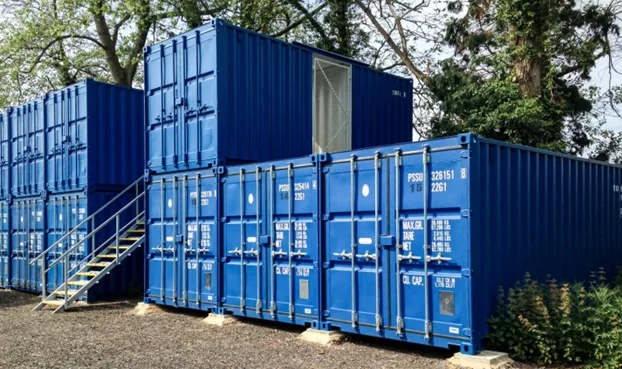In the last century, agriculture has progressed from traditional farming methods to a highly sophisticated and data-driven enterprise. The World Food Program estimates that almost a third of the world’s food supply is lost or wasted each year. This amounts to nearly 1.3 billion tons of wasted food every year.
Modern storage techniques help alleviate this issue and prevent food loss. Crop and harvest storage practices are one area where technology has changed. The Storage Revolution in common farms is one example of how technology alters the traditional farm-to-table cycle, with far-reaching ramifications ranging from farm yields to efficient supply networks.
The Value of Proper Storage
Proper storage procedures can considerably impact crop quality and durability, which typically translates to the quantity of produce available to the market. According to Markets and Markets 2023 study, the smart agriculture market value is expected to reach USD 25.4 billion by 2028, up from USD 16.2 billion in 2023, with storage technology playing a crucial role in this expansion.
Modern storage technology, including container storage in Leighton Buzzard, protects crops against environmental elements such as pests, temperature, moisture, and light, all of which can harm quality. Farmers had little choice but to rely on costly refrigeration or discard damaged food in the past. These difficulties are effectively solved, and supply chains are optimized by introducing the common farm’s Storage Revolution.
Enhanced Efficiency and Financial Gains
Innovative storage technology transforms the farm-to-table cycle by enhancing efficiency and giving farmers financial rewards. Here are a few examples of how this technology is altering the farming industry:
Reduced Food Loss
Farm storage technology ensures that product is stored optimally, decreasing food loss and preventing premature deterioration. Farmers can sell more food, which reduces the financial costs associated with rotten or damaged crops.
Simplified Harvesting and Shipping
The technology enables farmers to store and package their food immediately after harvesting, avoiding the need for expensive refrigerated vehicles and lowering transportation expenses. This also results in a more simplified supply chain, which increases farmer profitability.
Better Quality
Maintaining appropriate storage conditions keeps goods fresher for longer. This translates to better prices for farmers and higher quality for end consumers.
Increased production
Common Farm’s storage technology can help farmers enhance their production without expanding their land or labor force by extending the lifespan of produce and minimizing waste. This translates into higher sales and profitability.
Environmental Benefits
Reducing food waste and streamlining transportation can significantly impact the environment. Food production and transportation consume fewer resources, lowering greenhouse gas emissions and other environmental implications.
Farmers nationwide are already adopting the storage revolution of common farms, and the benefits are apparent. This technology is changing how we farm and eat by increasing productivity and profitability while reducing waste and improving quality.
Increased Food Security
Common Farms Storage Revolution agricultural methods help significantly to food security for various reasons:
- It increases the shelf life of perishable produce, ensuring it is still safe to eat after harvesting.
- These technologies provide a more efficient supply chain, boosting product availability.
- Food supply may be dispersed more equally across the country thanks to storage facilities; ensuring regions with fewer agricultural resources have a consistent supply of fresh products.
Improved Quality Control
Farmers faced crop losses from pests, inappropriate temperatures, and spoiling when using traditional storage methods. Automated systems using modern storage technology can monitor moisture, temperature, and other environmental conditions to guarantee products remain in good condition. This assists farmers in keeping track of their crops and minimizing losses. RFID (Radio Frequency Identification) technology is also used in Common Farm’s Storage Revolution to trace the phases of the product’s journey from harvesting to storage to transportation and even to the final destination. Enhancing visibility throughout the supply chain ensures product quality and safety.
Assistance to Small-Scale Farmers
Farms in Common Storage technology isn’t just for major corporations. It can also help small-scale farmers lacking the funds to invest in other storage solutions. The Biden-Harris administration’s initiatives resulted in investments in rural areas, food safety, climate-responsive farming, expanded and improved markets, and reduced family expenditures in February 2023. Small farmers that use shared storage facilities can store and sell their produce at a competitive price without incurring high storage fees.
Environmental & Sustainability Advantages
Food waste is a severe environmental issue due to the resources required to raise and transport food stuff and the volume of greenhouse gases produced. Farmers may use modern storage technology to extend the life of their harvests and reduce food waste. With so many people going hungry worldwide, this is a step in the right direction toward feeding more people and reducing food waste in landfills.
The Supply Chain Transformation
The storage revolution in common farms is more than technology advancement. Nonetheless, it has far-reaching consequences for the supply chain business. It alters the traditional farm-to-market cycle, allowing agribusinesses to store, track, and sell their products more efficiently. The revolution provides for the establishment of new markets and the provision of goods in geographically diversified areas, making agriculture more resilient to market swings.
Economic Growth Contribution
The agriculture business is a critical economic driver in many economies worldwide, and modern storage technologies will improve economic growth even further. Increased efficiency makes the market more competitive, making agriculture firms more profitable. Furthermore, shared storage facilities can generate job possibilities in remote locations, leading to higher living conditions in the communities where they are located.
Conclusion
The storage revolution in common farms is a watershed moment in contemporary agriculture. The traditional farm-to-market cycle has been altered by technology, enhancing market competitiveness, efficiency, and sustainability. The ramifications influence not only agricultural firms and the sector as a whole but also communities globally, contributing to economic growth and food security.


